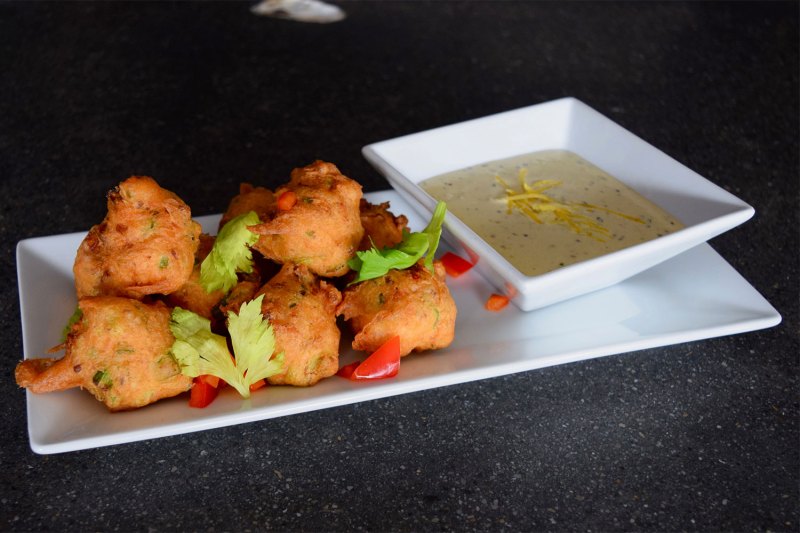Any food writer who covers regional cuisines, whether in the United States or worldwide, can vouch for the fact that assumptions and generalizations account for a lot of the popular views on local food scenes. After all, not all Southern cooks make grits, not all Southwestern chefs are fixated on green chiles, and not all New Englanders live on Dunkin’ coffee (okay, that one might be more true than false).
Geographic stereotypes about food always feel simplistic and lacking in nuance, and the larger the region, the fewer connections these perceptions have to reality. A perfect example of this paradox can be found in the Appalachian region of the eastern United States, a diverse and multifaceted area that defies easy definition, while at the same time producing remarkable dishes, restaurants, and chefs.
Appalachian cuisine is very diverse in terms of both geography and culture
“Appalachia” as a region follows the path of its eponymous Appalachian Mountains, which cut a diagonal line through the South and Midwest and end in the Northeast. According to the Appalachian Region Commission, Appalachia includes parts of 12 eastern and midwestern states (Alabama, Georgia, Kentucky, Maryland, Mississippi, New York, North Carolina, Ohio, Pennsylvania, South Carolina, Tennessee, and Virginia), along with the entirety of West Virginia. The enormous size of the region contributes to its hard-to-pin-down cultural nature, as explained by GM Shannon McGaughey of Vivian in Asheville, North Carolina (arguably the most talked-about Appalachian city these days): “I believe Appalachian cuisine is inherently difficult to define. It encompasses such a wide territory which contains various traditions, cultures, and histories, making it truly a huge melting pot.”
Chef/founder Mee McCormick of Pinewood Kitchen and Mercantile in Nunnelly, Tennessee describes Appalachian cuisine as a true amalgamation of influences from different waves of settlement and immigration, telling us that “Appalachian cuisine, to me, is predominately based off of Celtic heritage. The English, Irish, and Scottish settled the area, bringing with them classic, simple foods. As wheat was not available in the same abundance, corn became a staple of the area, bringing cornbread to the head of the table. My family is a mixture of old Appalachian and new Italian immigrants, as my grandmother’s family came to the United States in the early 1900s and found their way to the mountains.”
In terms of its close neighbors, Appalachia draws distinct inspiration from the flavors and techniques popularly associated with Southern cooking. In an interview with Eater, chef and sommelier Ashleigh Shanti of Benne on Eagle in Asheville (named an Eater Young Gun in 2019) stated that “when I look at Appalachian cookbooks, I see soul food.” Fellow Asheville chef Jay Seman of Oyster House Brewing Company agrees with the many parallels between Appalachian cuisine and Southern cuisine, adding that “Appalachian cuisine is a subset of Southern cuisine. It is simple and very rustic at heart. The Appalachian region has a strong history of preserving foods, like canning, curing, smoking, and salting. I think this is due to the lack of resources from being so far from big cities in the past. Since there is no coastline near the mountains, a lot of the proteins rely upon game meat and freshwater fish. It truly is about seasonality in Western North Carolina. You have to take what is given to you at the time and either eat it or prepare it to be eaten later. Nothing should go to waste.”
Appalachian dishes rely heavily on local produce and proteins, not just on processed ingredients
Mee McCormick wishes to dispel the notion that Appalachian dining centers around inexpensive processed foods with little nutritional value, telling us that “the biggest misunderstanding about Appalachian cuisine is that there isn’t one, as processed foods became the common staple. But, if we go back, we know that rabbit stews, beef stews, bush beans, and pole beans grown easily in the summer months and put up for long winter days became the base of most meals. My grandparents were migrant farm pickers in the summer months, traveling around in their car while my great grandma watched the kids back at home. They loved these excursions and saw them as adventures.”
Chef Bradley Griffin, who specializes in Appalachian cuisine at his Glade Spring, Virginia restaurant Sarah Jean’s Eatery, also points out the importance of local crops in this region’s culinary tradition: “I consider Appalachian cuisine ‘food that is from here’. If it can be raised, produced, or grown in Appalachia, then it is ‘Appalachian food’. It is also hard to pinpoint exactly what Appalachian cuisine is. You have a bunch of different regions that collectively share the same basic landscape, but have different history, climate, industries, etc. These differences are reflected in the food of these different regions, but I think there are a couple of themes that bring together the different communities. The first one is making do with what is available. This, I believe, is the biggest part of Appalachian cuisine. The plants grown in the garden are as much for eating fresh as they are for preserving for use in the winter. The cooks had to improvise, because resources were limited, and this led to an interesting food tradition. The other theme, I believe, is making sure the food can sustain you through a long day of work, whether you are working on the farm, in a mine, or wherever else. The work was hard and the days were long, so the food needed to ensure you had enough energy to get the job done.”
Try these recipes that effectively showcase Appalachian culinary themes and ingredients:
Pawpaw and Cushaw Vinegar Pie
(By Bradley Griffin, chef/owner, Sarah Jean’s Eatery, Glade Spring, Virginia)

Packed with autumnal flavors, this pie recipe features two ingredients native to the Appalachian region: the pawpaw (a fruit that famously tastes like a mix between a mango and a banana, with a hint of citrus and a wheat beer-like aftertaste) and the cushaw squash, a gourd regularly found at Appalachian farmer’s markets that makes an excellent substitute for pumpkin.
Ingredients:
- 1 cup pawpaw, skin and seeds removed (Griffin says that he “peels the pawpaws and pushes them through a mesh sieve to separate pulp from seeds.”)
- 1 cup cushaw squash, seeds removed, roasted until fork-tender, pureed, and fully cooled
- 2 cups granulated sugar
- 1 tsp ground cinnamon
- 1 tsps nutmeg
- 1/4 tsp ground cardamom
- 1/2 tsp vanilla powder (or 1 tsp vanilla extract)
- 3 eggs
- 4 tbsps apple cider vinegar
- 1 pie shell, either homemade or store-bought
Method:
- Place all ingredients except eggs and vinegar in a mixing bowl and whisk together until all ingredients are incorporated.
- Add eggs and vinegar and whisk together.
- Pour filling into a pie shell and bake at 375 degrees Fahrenheit for about 45 minutes, or until set. Allow to cool completely before serving.
- Serve with whipped cream or vanilla ice cream.
Crawfish & Okra Fritters
(By Jay Seman, chef, Oyster House Brewing Company, Asheville, North Carolina)

This recipe fully showcases the similarities between Southern cooking and Appalachian cooking, due to the inclusion of ingredients common to both cuisines. The crawfish, a freshwater crustacean, is native to several Appalachian states, like Tennessee and Kentucky. As for okra, this soul food staple grows throughout the South, including the part of the region that exists within Appalachia.
Ingredients:
- 4 cups frying oil
- ¾ cup all-purpose flour
- ¼ cup corn flour
- 1 ½ tsp baking powder
- ½ tsp salt
- 1 tsp sugar
- 1 egg, beaten
- ½ cup milk
- 1 tbsp butter, melted
- ½ lb. cooked crawfish tails
- ½ lb. okra, finely chopped
Method:
- In a heavy cooking pot or deep fryer, heat cooking oil to 360° Fahrenheit.
- In a medium mixing bowl, combine flour, salt, sugar, and baking powder. Mix well.
- In another medium mixing bowl, combine egg, milk, and melted butter.
- Whisk wet ingredients into dry ingredients. Do not over-whisk batter.
- Fold in crawfish tails and okra. Spoon into fryer. Cook until outside is golden brown and inside is done.
- Drain on paper towels and serve immediately.



